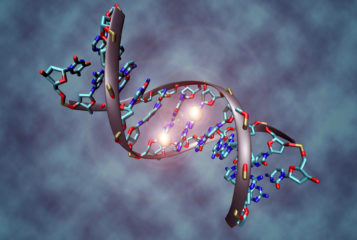Circadian rhythms rely on more than just 'clock genes' to produce proteins crucial in controlling the daily sleep/wake cycles of biological organisms, according to new research.
The findings, published in the Proceedings of the National Academy of Sciences, show that non-coding microRNAs (miRNAs) are also important genome-wide regulators of the circadian clock. Unlike clock genes, these do not code for proteins, but are nevertheless critical for the normal functioning of circadian rhythms.
'We've seen how the function of these clock genes are really important in many different diseases,' said Steve Kay, professor of neurology, biomedical engineering and biological sciences at the Keck School of Medicine, University of Southern California. 'But what we were blind to was a whole different funky kind of genes network that also is important for circadian regulation and this is the whole crazy world of what we call non-coding microRNA.'
Circadian rhythms govern sleep/wake cycles and are crucial for health. Past research has predominantly focused on clock genes that encode proteins that drive oscillating cycles of gene expression to alter physiology and behaviour. Evidence now suggests that miRNAs, once considered 'junk DNA', also have a significant role as circadian modulators, but determining which of the hundreds that exist has proven difficult until now.
In collaboration with the Genomics Institute of the Novartis Research Foundation, Professor Kay and his team, led by Dr Lili Zhou, developed the first cell-based, genome-wide screening approach to test almost 1000 miRNAs. After individually transferring each miRNA into cells that were engineered to glow on and off (according to the cell's 24-hour circadian cycle), miRNAs that modulated the cycle were identified if their inactivation affected the behaviour of the cells - and where their addition and deletion had the opposite effect on the cells' circadian rhythm.
'Much to our surprise,' added Professor Kay, 'we discovered about 110 to 120 miRNAs that do this.'
The physiological and behavioural impact of these miRNAs were then tested in mice. After a cluster of miRNAs (miR-183/96/182) were inactivated, mice altered their wheel-running behaviour in the dark compared to control mice. Inactivating the cluster also affected circadian rhythms differently in brain, retina and lung tissue, suggesting the way miRNAs regulate the circadian clock is tissue specific.
Understanding the role miRNAs have in the circadian network in different tissues might reveal new of ways of treating or preventing certain diseases. 'In the brain, we're interested in connecting the clock to diseases like Alzheimer's, in the lung we're interested in connecting the clock to diseases like asthma,' said Professor Kay.
'The next step I think is for us to model disease states in animals and in cells and look at how these microRNAs are functioning in those disease states.'






Leave a Reply
You must be logged in to post a comment.